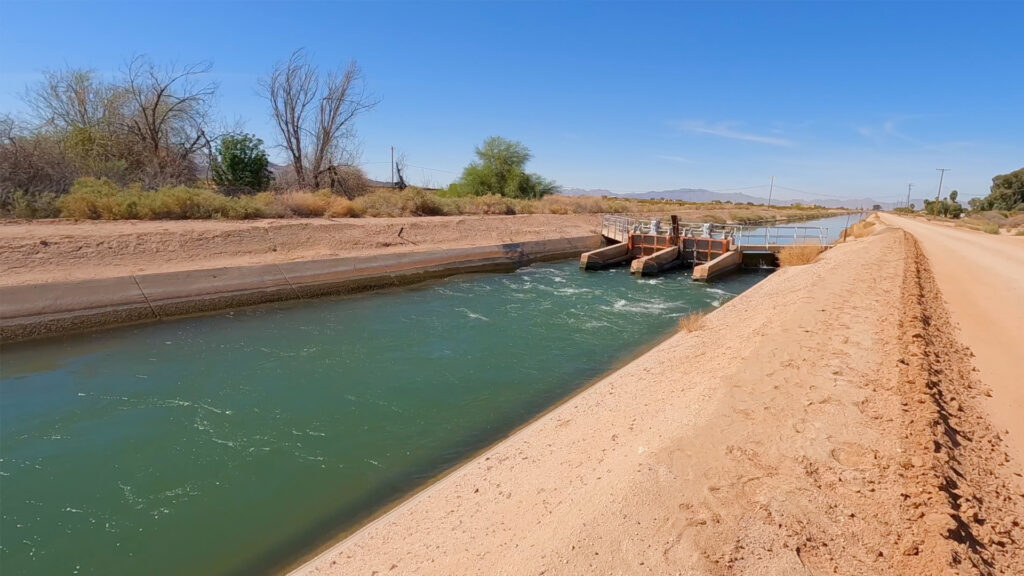By Robert C. Jones Jr., University of Miami News
The news hit developers like a sledgehammer: The state of Arizona, faced with a two-decades-long drought, would put the brakes on new home construction in the Phoenix area that depends on groundwater.
While the decision, reached last year by Arizona Department of Water Resources, could likely spell the end of the rapid development that has made the Phoenix area one of the nation’s fastest growing metropolitan regions, it raises a much more serious question: How will the city and its surrounding areas deal with a water scarcity crisis that has been worsened by the effects of climate change?
More than 2,000 miles away, a University of Miami College of Engineering researcher and his team may hold the answer. In a recently released report, they detail measures by which residents in new and existing single-family homes in Phoenix and in three other water-stressed communities can improve their water usage.
“Rapid urbanization and rising water use, which put stress on centralized systems, provide significant difficulties for urban water infrastructure,” Esber Andiroglu, associate professor of practice in the Department of Civil and Architectural Engineering and the lead author of the report, wrote. “Historically, cities have relied on these systems, but those systems are unable to meet the growing needs and are made worse by problems including resource-intensive operations, outdated infrastructure, and inefficient energy use.”
Released by the College of Engineering’s Sustainability and Resiliency Adaptation Laboratory, or SUREAL, the report recommends that Phoenix — as well as Houston, Texas; Las Vegas, Nevada; and Des Moines, Iowa — can save billions of gallons of water each year by adopting decentralized methods such as using more water-efficient plumbing fixtures and appliances; harvesting rainwater and collecting condensation from HVAC systems, both of which can be used to water lawns, wash cars, and flush toilets; and treating and reusing wastewater.

“Across Phoenix and Las Vegas, characterized by arid climates with limited rainfall, water-saving fixture installation and grey water harvesting systems are pivotal for water conservation,” the researchers wrote. “Conversely, in Des Moines and Houston, where rainfall is more abundant but still subject to seasonal variability, optimizing water usage through efficient fixture installation and grey water recycling becomes paramount.”
Phoenix, for example, could save 16.1 billion gallons of water each year by implementing some of the measures recommended in the report, while homes in Houston could save over 15.67 billion gallons of water annually, Andiroglu pointed out.
He recently presented the findings of the report, “Water Conservation and Codes: Leveraging Global Water-Efficient Building Standards to Avert Shortfalls,” at the first Water Conservation Summit in Washington, D.C., hosted by the International Code Council (ICC).
The ICC and EXP, a global engineering, architecture, design, and consulting firm, partnered with Andiroglu and his team on the report. The water-conservation strategies outlined in it are contained in the ICC’s 2021 International Water Conservation Code Provisions.
“At the moment, those provisions are only recommendations,” Andiroglu said. “But if they were to become mandates rather than voluntary, the benefits for communities could be tremendous.”
With some 700 million people in danger of being displaced by severe water scarcity by 2030, the report comes at a critical juncture, he explained. Over the next 50 years, nearly half of the freshwater basins in the U.S. may not be able to meet monthly water demands, with shortages anticipated in the central and southern Great Plains, the Southwest, and central Rocky Mountain states, as well as in parts of California, the South, and the Midwest, he said.
Andiroglu and his team — Murat Erkoc, an associate professor in the Department of Industrial and Systems Engineering, and graduate research assistant Guna Medavarapu — are now conducting research as part of the second phase of their study, which focuses on water-saving measures for larger residential buildings. The third phase of their study will look at provisions for commercial structures.
“We’ll also scale up our research outside of the U.S., looking at Latin America, the Middle East, Australia, and Asia,” Andiroglu said.
Driven by population growth, economic development and other factors, water use has surged globally over the past century, according to the report. “This has led to a situation where many regions already struggle with water scarcity,” it reads, “and the situation is expected to worsen in the coming decades as a result of climate change impacts.”
Born and raised in Cyprus, one of six countries identified by the World Resources Institute as facing the greatest water scarcity in the world, Andiroglu knows better than anyone the importance of conserving water.
“As an island nation, Cyprus has always experienced water shortages, especially during the very hot summer months,” he said. “Growing up, I was reminded about water conservation daily by my parents with basic daily routines such as limiting the duration of showers and watering lawns or washing cars only on days when there was a steady water supply from the central utility. Water conservation was instinctively engraved in my family’s lifestyle. So, this report hits home for me.”
This piece was originally published at https://news.miami.edu/stories/2024/04/water-scarcity-and-the-climate-crisis.html.
Sign up for The Invading Sea newsletter by visiting here. If you are interested in submitting an opinion piece to The Invading Sea, email Editor Nathan Crabbe at ncrabbe@fau.edu.



